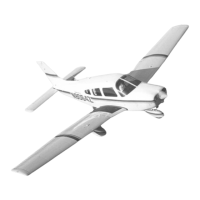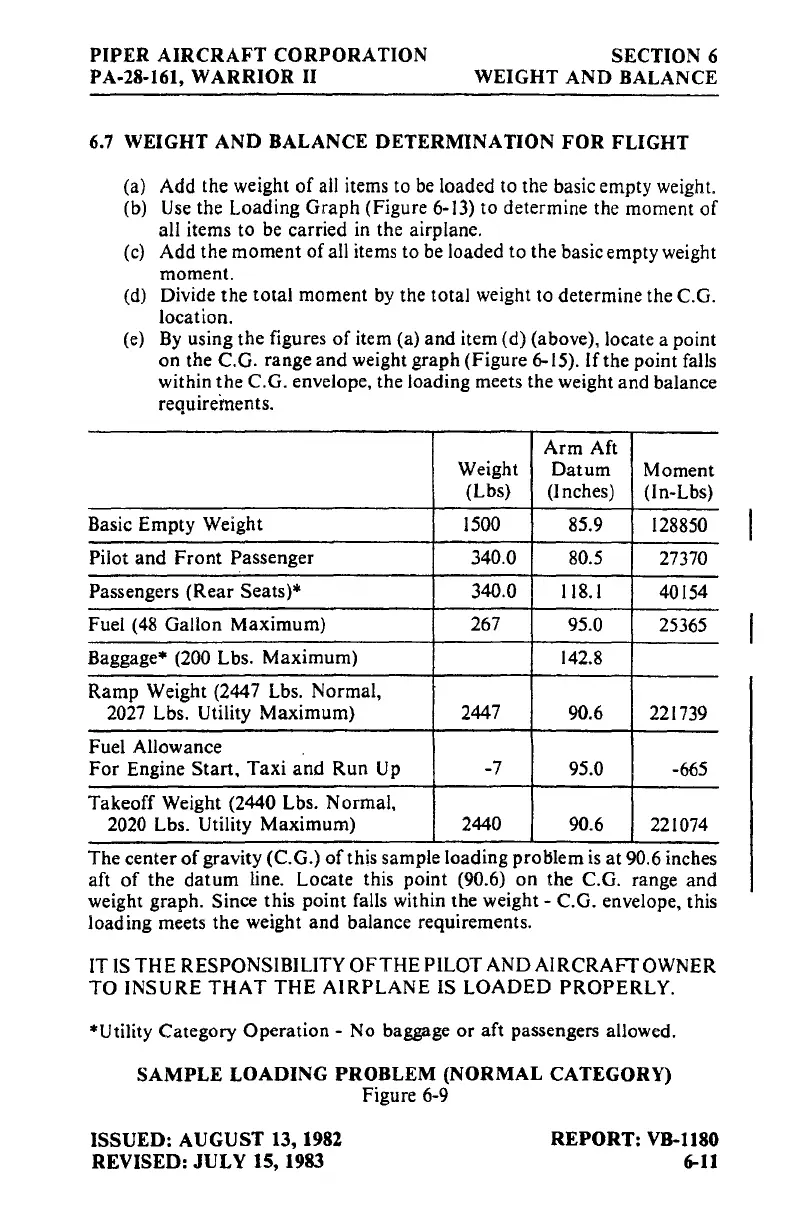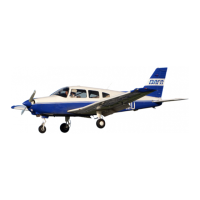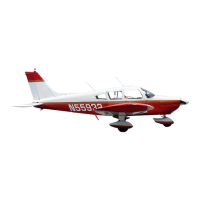PIPER
AIRCRAFT
CORPORATION
PA-28-161,
WARRIOR
II
SECTION
6
WEIGHT
AND
BALANCE
6.7
WEIGHT
AND
BALANCE
DETERMINATION
FOR
FLIGHT
(a) Add the weight
of
all items to
be
loaded to the basic empty weight.
(b)
Use
the Loading
Graph
(Figure 6-13) to determine the moment
of
all items to be carried in the airplane.
(c)
Add
the
moment of all items to be loaded
to
the basic empty weight
moment.
(d) Divide
the
total moment
by
the total weight to determine the
C.
G.
location.
(e)
By
using
the
figures
of
item (a) and item (d) (above), locate a point
on the
C.
G. range
and
weight graph (Figure 6-15).
If
the point falls
within
the
C. G. envelope, the loading meets the weight and balance
requirements.
Arm
Aft
Weight
Datum
Moment
(Lbs)
(Inches)
(ln-Lbs)
Basic
Empty
Weight 1500
85.9
128850
Pilot
and
Front
Passenger 340.0
80.5
27370
Passengers
(Rear
Seats)* 340.0
118.1
40154
Fuel
(48
Gallon Maximum)
267
95.0
25365
Baggage*
(200 Lbs. Maximum) 142.8
Ramp Weight (2447 Lbs. Normal,
2027 Lbs. Utility Maximum) 2447 90.6
221739
Fuel Allowance
For
Engine
Start,
Taxi
and
Run
Up
-7
95.0
-665
Takeoff Weight
(2440 Lbs. Normal,
2020 Lbs. Utility Maximum) 2440 90.6
221074
The center
of
gravity (C. G.)
of
this sample loading problem
is
at
90.6 inches
aft
of
the
datum
line. Locate this point (90.6)
on
the C.G. range
and
weight graph. Since this point falls within the
weight-
C. G. envelope, this
loading meets the weight and balance requirements.
IT
IS
THE
RESPONSIBILITY
OF
THE
PILOT AND
AIRCRAFT
OWNER
TO
INSURE
THAT
THE
AIRPLANE
IS
LOADED
PROPERLY.
*Utility Category Operation - No baggage
or
aft passengers allowed.
SAMPLE
LOADING
PROBLEM
(NORMAL
CATEGORY)
Figure 6-9
ISSUED:
AUGUST
13, 1982
REVISED:
JULY
15, 1983
REPORT:
VB-1180
6-11

